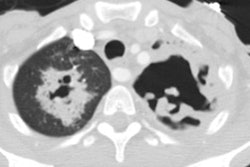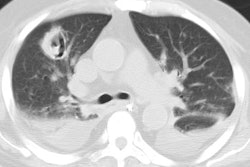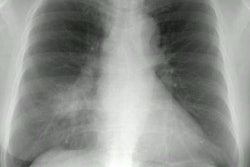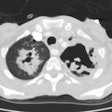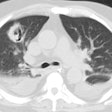Semin Respir Infect 1997 Mar;12(1):61-67. Tularemia pneumonia.
Gill V, Cunha BA
Tularemia pneumonia may complicate the various clinical presentations of tularemia, or present as an uncommon zoonosis. Approximately 200 cases of tularemia are reported in the United States per year, and 10% to 20% present with pneumonia either as a primary event or as a complication of ulceroglandular or typhoidal tularemia. Tularemia pneumonia also occurs with the other tularemic forms, glandular, oculoglandular, and oropharyngeal tularemia as a result of secondary bacteremic spread to the lungs. Pneumonia usually occurs within 2 days to months after infection. The mortality rate of primary tularemic pneumonia and pneumonia complicating typhoidal tularemia is high. The clinical and roentgenographic presentations of tularemia pneumonia are highly variable and is one of the zoonotic atypical pneumonias. Tularemic pneumonia may mimic fungal and bacterial pneumonias, tuberculosis, or malignancy. The diagnosis of tularemic pneumonia should be considered in any patient presenting with an atypical pneumonia with the finding of an ulcer and/or lymphadenopathy and a history of outdoor activity. Serum agglutination tests and ELISA are the basis of serological diagnosis. Francisella tularensis can be cultured from the sputum, skin ulcer, pleural fluid, and the lymph nodes, but cultures should not be obtained because of the danger to laboratory personnel. The drug preferred for treatment of tularemic pneumonia is streptomycin for 1 to 2 weeks.
PMID: 9097380, MUID: 97251707
